Wild About Yeast: Capturing Local Strains in West Africa
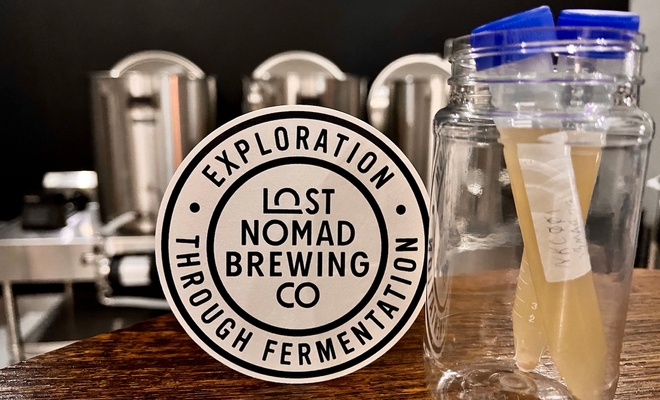
At Lost Nomad Brewing, we’re showcasing the differences between beers of the same style based on where they’re brewed in the world. We think that makes beer more approachable for those new to craft beer and the ability to try, say, a Mexican Lager and Haitian Lager next to each other provides a unique experience for beer aficionados. It wouldn’t be enough for us to simply brew beers from around the world without brewing a beer made from locally sourced ingredients. Grain doesn’t grow here, hops take too long even if they would somehow thrive here, and the water is from a reverse osmosis system. So we set out to capture local wild yeast and this is how it went.
CATCHING LIGHTNING MOLD IN A BOTTLE
We started by using the Bootleg Biology Yeast Wrangling Kit, which made sourcing local yeast approachable and downright fun. We came into this never having attempted a yeast capture and, predictably, there was some trial and error. There are three methods to capture local wild yeast: from the air, off the skin of a fruit or vegetable, or by swabbing a source of yeast directly (like from a bottle or fermentation vessel). The easiest is from the air: make some wort, put it in a jar with some kind of porous cover on top, and let it sit out somewhere overnight.
There could be yeast in there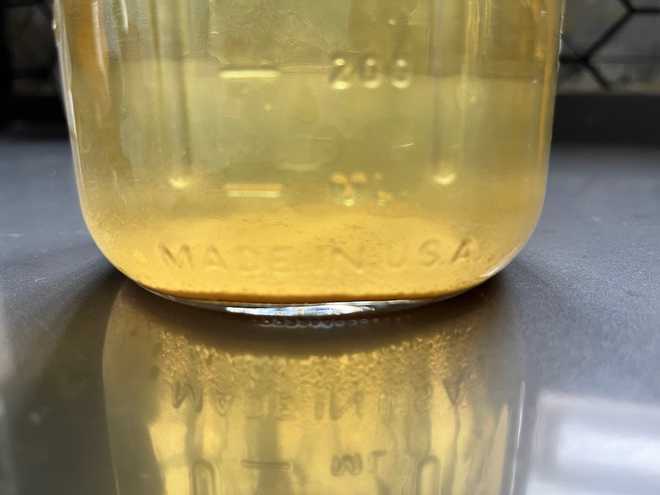
We tried capturing yeast from the air and the result was that we successfully isolated black mold. Twice. There’s just too much dust in the air. The first attempt occurred in our backyard: just set the jar out on a table, let that sweet Saharian breeze blow stuff into it, and take a sample the next day. We ended up with a pile of sand in the bottom of the jar but maybe we got some yeast in there–no, no just what I’m going to assume is mold. Or the fungus that kicked off the apocalypse in The Last of Us.
Nope, definitely not yeast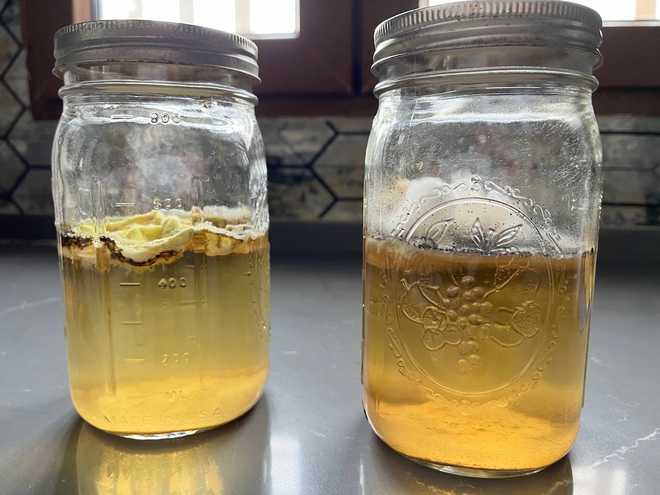
When that was unsuccessful, we tried capturing it on the roof, thinking more air circulation would be better. We were wrong. We just ended up with a larger amount of dust (and black mold).
No way this will work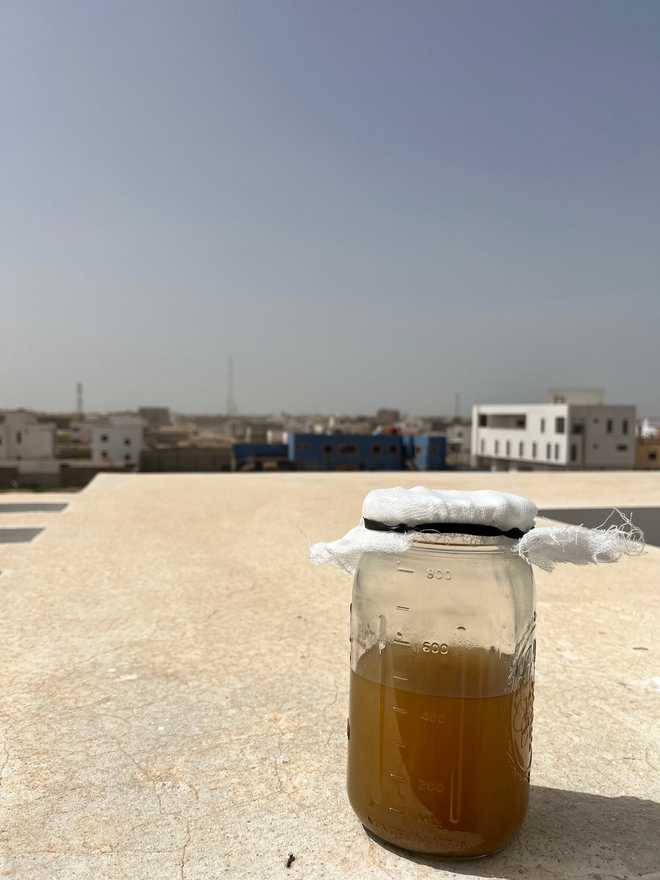
In the end, we successfully isolated wild yeast from the skin of our mini mandarin orange tree in our fledgling garden. That was pretty easy: pluck a few pieces of fruit and drop them in some wort. After a few days yeast settles to the bottom for harvest.
ISOLATING A STRAIN
To isolate a yeast strain from a sample, we needed to act like we know what we’re doing with petri dishes and agar. Creating sanitary agar plates is its own challenge. We don’t have a lab or vented hood; rather, we have a drafty kitchen in West Africa.
The first batch we created, about half ended up growing mold after the agar set in the fridge. It’s not the easiest thing to get petri dishes here and because we’re not in the business of creating a hundred agar plates, we set up a UV light like folks use in their HVAC systems to clean the air as it passes by it. We created a batch of agar plates and sanitized them under the light for a very scientific ten minutes. We’ve had no contamination problems since.
Note the yeast isolation tool (aka paperclip)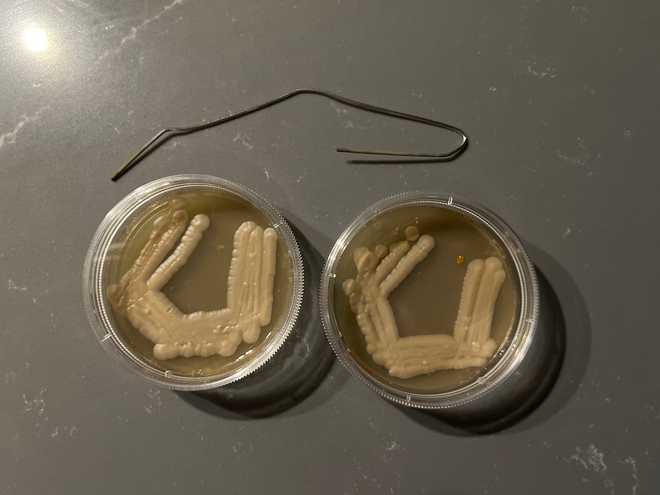
We isolated wild yeast on the first try: multiple agar plates contained perfect colonies of what appeared to be the same yeast strain. We took a sample and looked under a microscope at the local health clinic and it appears to be yeast and not, say, Lactobacillus. Either would have been a win.
After successfully isolating the wild yeast strain, we created a yeast starter with it and it has propagated up to a half liter starter. We're excited to see how this local strain will impart unique flavors to our beer–we’ll cover that in a follow up post.
Step 2: make beer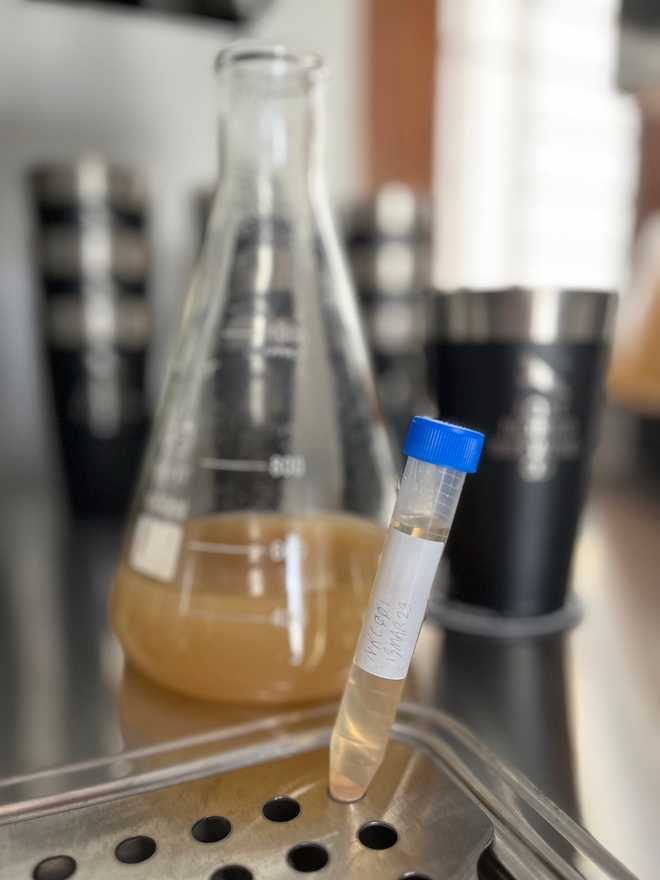
THE COUNTRY'S FIRST LOCAL BEER YEAST
While it's likely that more humans have walked on the moon than brewed beer in this country, we can confidently say that Lost Nomad is the first brewery in this country to create a beer with locally sourced yeast. We give credit to Bootleg Biology and their yeast wrangling kit for making this project possible–we had a blast in the process. Moreover, we're planning to send a sample of the strain back to them for their yeast culture bank.
Keep an eye out for the follow up where we'll share more about the beer that we brew with this local strain and the unique flavors it imparts. We’re excited to put this local beer alongside others of the same style to showcase the differences that make it unique. And while one of our core values is to educate our customers about beer in an approachable way, we learned quite a bit ourselves during the yeast capture process and had a ball doing it. We hope our customers enjoy it, we're brewing this for them.
